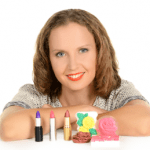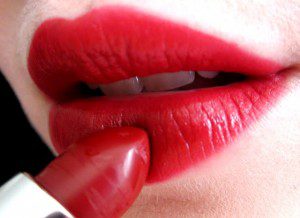By Lana King
Guest writer for Wake Up World
Through the years, the main reasons why women, still use lipstick remain the same: they want to make themselves stand out among the crowd and make themselves look more attractive.
Without a doubt, the use of lipsticks has come a long way since the ancient times when the only option for people to apply color to their lips was by using colourful fruit extracts. Nowadays, there are different kinds of ingredients used to make commercial lipsticks. Competing brands use different ingredients for their lipsticks; but the secret is, they all make use of the same basic ingredients. These ingredients are shown below.
Also included is a special home recipe for ‘Pink Amour’ lipstick, so why not make your own?
Common Ingredients in Commercial Lipsticks
[pro_ad_display_adzone id=”110028″]
Wax
Wax is the main ingredient of all lipsticks since this it is the main reason why lipstick can be applied on the lips. The most commonly used waxes for lipsticks are carnauba wax, candelilla wax and beeswax.
Oils
Oil comprises more than 60% of the entire composition of a lipstick. The most commonly used oils for lipsticks include mineral oils and vegetable oils.
Pigment
Pigments are the main reason why there are different colours of lipsticks. Women have different preferences when it comes to the colour of lipstick that they should wear.
Alcohol
Alcohol is used as a component in making lipsticks as a solvent for oil and wax.
Fragrance
Synthetic ingredients of lipstick often have their own smell that can ruin the entire smell of the lipstick. However, manufacturers add fragrance in order to eliminate the foul odours.
Harmful Ingredients
Preservatives and Antioxidants
Lipsticks are cosmetic products that do not expire, however they have ingredients that become less functional as time passes by. For that reason, most commercial lipsticks contain preservatives to prolong their life.
Pigments
There are pigments used to colour lipsticks that are derived from coal tar. Coal tar is a substance that can cause attention deficit disorder, skin irritation, headache, and nausea due to its toxicity. Another harmful pigment used for lipsticks is Carmine, a substance that can cause skin irritation.
Carmine
Also known as E120, Natural Red, Crimson Lake, and Cochineal, Carmine is a red pigment containing carminic acid and aluminum salt. Carmine is a product of scale insects indigenous to the tropics and subtropical regions of Mexico and South America.
Alternatives to Commercial Lipsticks
Even though lipsticks have greatly developed and changed since the times they were first introduced, the formula for creating them has remained the same. Basically, lipstick is made from the mixture of pigments, waxes, and oils which can then be applied to the lips.
With this simple formula, you can always create your own natural lipstick and add to it flavours and scents you love. Although some home-made lipstick recipes may not feel the same way as the highly processed machine-made variety, or those which are full of synthetic ingredients, they are easily made and come with a sense of safety or peace of mind from knowing exactly what is in the products that you are using. For those who want to avoid synthetic materials, for Vegans or those with allergies to some substances, there is no more need to deprive your lips of the best lipstick and lip products you need, since creating your own lipstick means freedom to take out the lipstick ingredients you don’t like and replace it with smarter and healthier options.
Make Your Own Pink Amour Lipstick Recipe
Ingredients:
- 1/2 tspn beeswax
- 1/2 tspn Candelilla wax
- 1/2 tspn Shea Butter
- 1 tspn Castor Oil
- 1 tspn Jojoba Oil
- 1 ml Vitamin E
- 1 tspn Pink Mica
- 1/2 ml Peppermint Essential Oil (optional)
Method:
1. Sterilise all utensils, product containers and workshop surfaces. Wipe Utensils down with alcohol.
2. Melt waxes, butters and oils in microwave or double boiler.
3. When the waxes are completely melted, add vitamin E.
4. Add Pink Mica, Peppermint Essential Oil and stir well.
5. Pour mixture into the lipstick mould. Allow to naturally re-harden.
6. Remove lipstick from the mould and place in the lipstick tube.
About the author:
 Lana King started her career in the cosmetic industry as Biotechnologist, but soon realised that her real passion was educating people about safe and fresh cosmetics. It was her love of natural cosmetics and passion for inspiring people that lead her to write a book 10 Reasons to Swap Your Lipstick – The Smart Woman’s Guide to Better Lipstick Options. Lana also founded the company CreateYourCosmetics.com.au and is grateful that, through this business, she is helping to make a positive impact throughout the world.
Lana King started her career in the cosmetic industry as Biotechnologist, but soon realised that her real passion was educating people about safe and fresh cosmetics. It was her love of natural cosmetics and passion for inspiring people that lead her to write a book 10 Reasons to Swap Your Lipstick – The Smart Woman’s Guide to Better Lipstick Options. Lana also founded the company CreateYourCosmetics.com.au and is grateful that, through this business, she is helping to make a positive impact throughout the world.
In her spare time, Lana loves to create her own raw food recipes and practice yoga. She is also making plans to fulfil her dream of building a yoga retreat with a huge collection of books.
You can connect with Lana at CreateYourCosmetics.com.au
[pro_ad_display_adzone id=”110027″]







